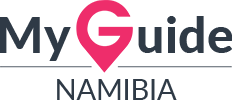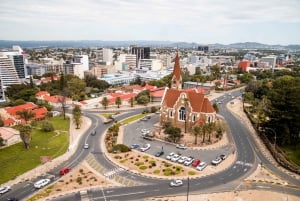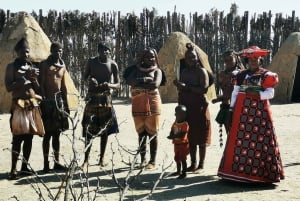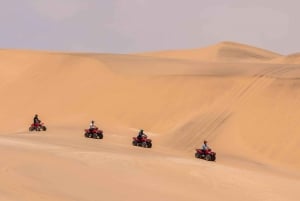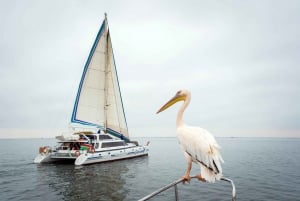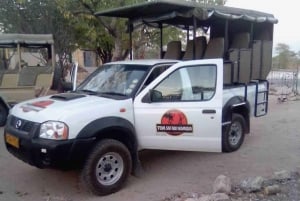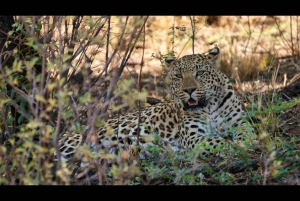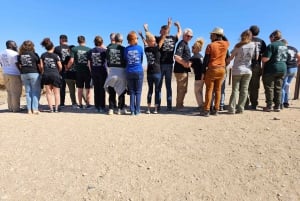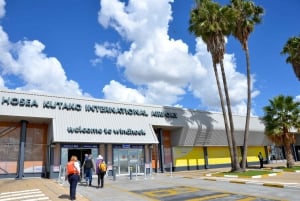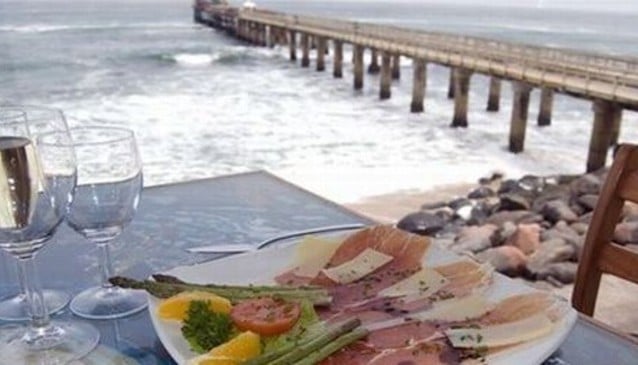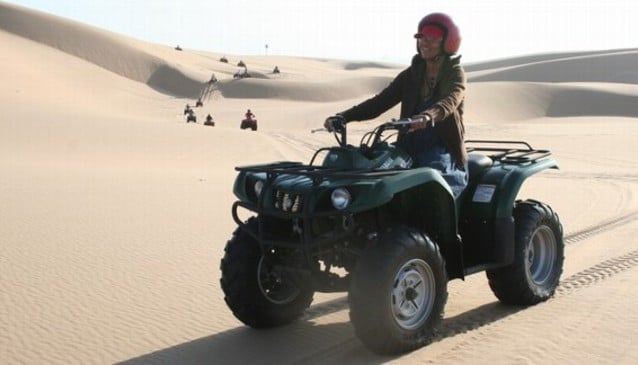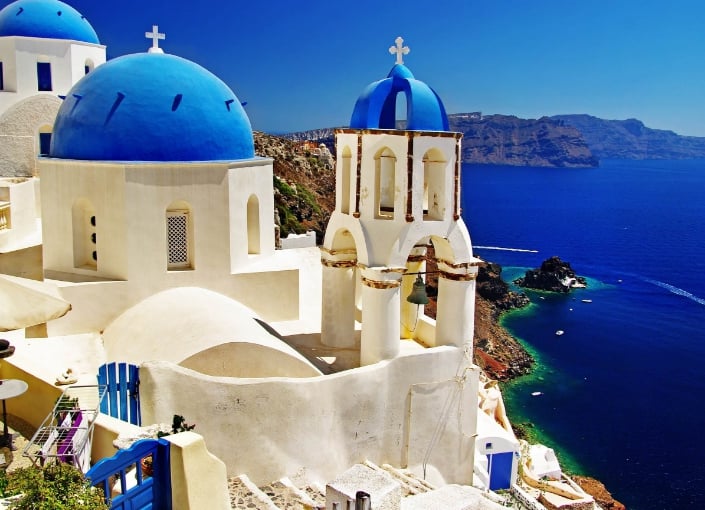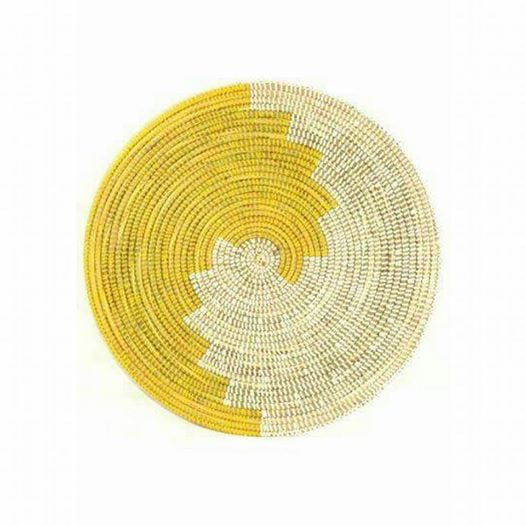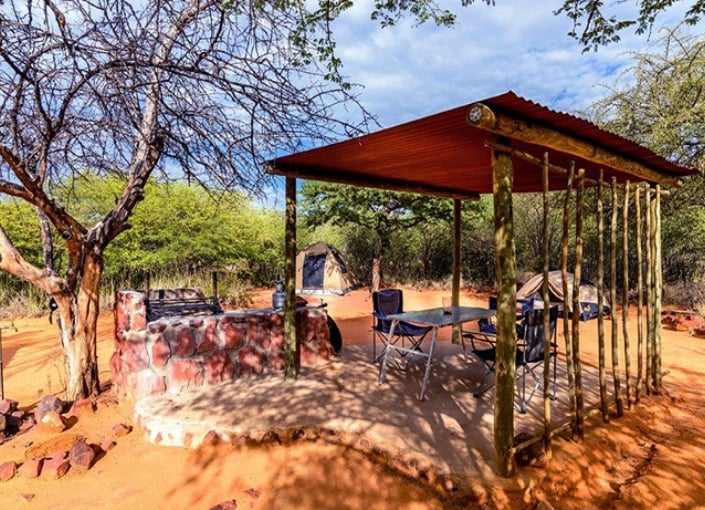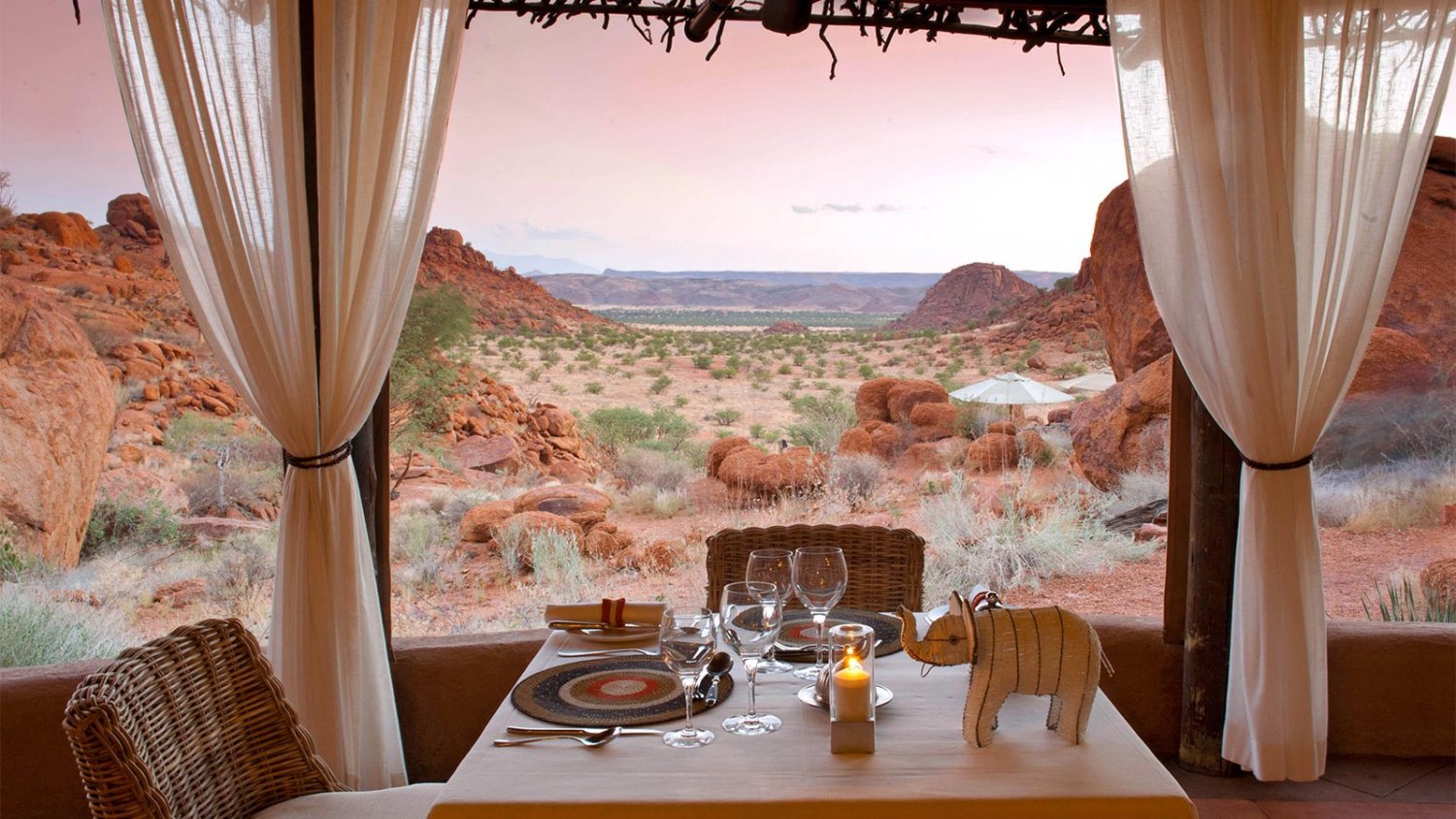FAQ
1. Do I require a passport and / or visa to enter Namibia?
Yes you require a passport and a visa to enter Namibia. All foreign nationals must in possession of a passport that is valid for at least six months after the date of entry. All visitors require a visa except nationals of the countries with which Namibia has the necessary visa agreement. No visas are required from countries that have the necessary visa agreement with Namibia. Tourist visas can be obtained from the Ministry of Home Affairs and Namibian embassies abroad.
2. What is required at the border when driving to Namibia from South Africa as well as border post times?
A passport that is valid for six months after date of entry is required. There is also cross border charges (CBC) or entry fees to pay when entering Namibia from neighboring countries. All foreign registered vehicles entering the country must pay an amount of N$120.00 per vehicle and N$80.00 per trailer. You need a sticker that identifies the country you coming from. South African citizens do not need a visa.
The times for the border posts vary.
Namibia / South Africa
Ariamsvlei: open 24hrs
Noordoewer: open 24hrs
Oranjemund / Alexander Bay: 06H00-22H00
Rietfontein: 08H00 - 16H30
Hohlweg: 08H00 - 16H30
Velloordrift / Onseepskans: 08H00 - 17H00
Namibia / Botswana
Impalila Island: 07H00 - 18H00
Ngoma Bridge: 07H00 - 18H00
Muhembo/ Shakawe: 06H00 - 18H00
Buitepos / Mamuno: 07H00 - 24H00
Namibia / Angola
Ruacana: 08H00 - 18H00
Omahenene: 08H00 - 18H00
Oshikango: 08H00 - 18H00
Rundu: 08H00 - 18H00
Namibia / Zambia
Wanele / Sesheke: 06H00 - 18H00
3. How do I get to town from the airport?
There are car rental companies operating from the airport. There are also registered private transfer operators that transport passengers in and around Windhoek city and to the Hosea Kutako International Airport and Eros Airport.
4. What is the public transport like?
There are regular transport services in the city. Shuttle operators are recommended as a means of transport for tourists because they are registered with Namibia Tourism Board (NTB) and are insured for the safety of the passengers. Car rental is the most popular form of transport for visitors to Namibia; car rental operators are available in all major centers.
5. What train services operate into and around Namibia?
There are several trains that regularly visit Namibia from South Africa. These are luxurious trains such as the Shongololo Express, Bushveld Train Safaris and the Rovos Rail these operators visit the country on scheduled itineraries. Namibia also has its own luxurious train known as the Desert Express. The train is owned by Trans Namib Holdings Ltd. It offers overnight scenic drives between Windhoek and Swakopmund, stopping along the way for excursions. The train also goes to northern and southern Namibia. There is also Omugulu Gwombashe Star is also a luxury train that goes from Windhoek to Oshivelo in Northern Namibia.
6. Are there regular bus services?
The Intercape Mainliner bus service runs between major towns in Namibia. It connects with Johannesburg, Cape Town and other towns and cities in South Africa. The bus service also travels between Windhoek and Victoria Falls, Livingstone and Chobe National Park.
7. Road and safety conditions; are places easy to get to / clearly signposted, distances and time of travel?
In Namibia we drive on the left hand side of the road. A driver's license is needed to drive on Namibian roads. All passengers in the car must wear seatbelts. The road network in Namibia is made up of tarred road, gravel road and sand road. The speed limit in urban areas is 60km/h, on tarred roads outside urban areas is 120km/h and on gravel roads outside urban areas is 100km/h. Gravel roads can be unpredictable. Do not drive too fast; it is easy to lose control of your vehicle on gravel roads, 80km/hr is sufficient for gravel roads.
Places are easy to get to because the roads are clearly marked. Places are far from each other because Namibia is a vast country. Along most of the roads sign boards are displayed with information.
The distances between towns are clearly marked along the road. Please avoid traveling during the night. Wildlife is mostly active during the night, and the possibility of an accident is increased.
8. Do we need an international driver's license for Namibia / can I use my EU driver's license in Namibia?
Tourist traveling to Namibia can use their driver's license as long as they comply with the rules of the national roads of the country. The car rental companies may require international driving license, because the language use on the license is not English. It also depends from company to company.
9. Do we need a 4x4 vehicle to travel on dust and gravel roads?
It is highly recommended to use a 4x4 vehicle when you are driving on gravel road. 4x4 are recommended because of their height and durability. The vehicle will not be damaged by lose stones on the road. Sedan cars get stuck easily in sand roads; it is better and safer to use 4x4 vehicles, however major national gravel roads can be navigated by sedan but it is slow paced and hard driving. Please insist on an instruction from the car rental company on the off-road mechanics of the vehicle and driving and recovery techniques.
10. Petrol stations and cards and where they can be used?
Shell Service Stations uses D-Card. Most of the other petrol stations use fuel cards. It is always better to ask the petrol station attendant whether they accept cards or cash before your vehicle is refueled.
11. What are the entry permit requirements for the various parks across Namibia?
- All National Park's in Namibia issue the relevant permits upon arrival at the park gates, fees and requirements only differ at a few parks.
- The following are strictly prohibited in all parks: pets, motorcycles, persons traveling on open vehicles or open loading bays, hitch hikers, leaving indicated roads, leaving the vehicle, pellets guns, catapults or unsealed firearms, disturbance of game.
- The Kuadom National Park requires visitors to be in a convoy of two or more vehicles and only one vehicle of the convoy may tow a trailer.
12. When do I need a permit to enter National Parks and should it be booked in advance?
Booking in advance will secure peace of mind knowing that all formalities is taken care of, normal entry permits is available at park gates, any other special permits for hiking est., must be pre-arranged at the Namibia Wildlife Resorts ( NWR) All National parks require some form of permit.
13. Can you advise the Fishing and hunting regulations and seasons?
13.1. Hunting Regulations:
Hunting season
The trophy hunting season stretches from 1st February to 30th November. During December and January the hunting season is closed to trophy hunting. February may still fall within the rainy season and November may still be too hot.
Hunting Guides
Hunting shall be conducted exclusively in company of a registered hunting guide, master hunting guide or professional hunter.
Hunting guides (HG) may only conduct hunts on their own farm(s), duly registered as a hunting farm(s).
Master hunting guides (MHG) may only conduct hunts on their own farm(s) duly registered, plus two additional duly registered hunting farms.
Professional hunters (PH) may conduct hunts on all farms, provided they have written permission from the owner of the property independent of whether the farm is registered or not.
P H with big-game license. Only these PH's may conduct hunts with guests for elephant, rhinoceros, buffalo and lion.
Bow hunting. Only hunting guides/ master hunting guides/ professional hunters in possession of a valid bow hunting license may conduct bow hunting and guide bow hunters.
Hunting permits
A hunt shall only commence if the HG / MHG / PH has obtained a valid hunting permit (trophy hunting permit) from Nature Conservation prior to the start of the hunt. For cheetah and leopard an additional hunting permit has to be obtained prior to the start of the hunt.
Wing shooting
A hunter may take no more than two members of the permitted bird species during the hunt, which will be listed in the trophy permit. During the official "wing shooting season" more of each species is allowed.
Hunting clients
A hunting guide, master hunting guide or professional hunter shall accompany only two hunters to hunt simultaneously.
Firearms
Smallest caliber 7 mm.
Minimum energy (EO - muzzle velocity): 1350 Joule for springbuck, duiker etc.
2700 Joule for hartebeest, wildebeest, kudu, gemsbok, eland etc.
5400 Joule for buffalo, elephant, rhino etc.
No solid point cartridge is allowed to be used on antelope or any other species. Handguns and automatic weapons are prohibited. !!
Bow hunting
A Hunting Guide, Master Hunting Guide or Professional Hunter with additional qualifications for bow hunting must guide trophy hunters. Bow-hunting for trophies may only take place on game farms and areas which are registered for this purpose with the Ministry of Environment and Tourism. Hunting permits for various game species must be organized by the outfitter.
Bow energy is specified as follows:
Small Game -25 ft/lb
Medium Game -40 ft/lb
Large Game -65 ft/lb.
Trophies
A hunting guest may only take two animals of a kind each year, irrespective if the trophies are exported or not.
All Trophies must attain the minimum points of trophy quality.
13.2. Fishing Regulations:
Temporary fishing permits can be obtained at any local MET or MFMR offices in the coastal Towns,.
This section will contain information with regard to recreational fishing, such as allowable catches, sizes and locations.
Coastal Angling:
A New set of regulations, made in terms of the new Fisheries Act (Act 29 of 1992), came into force on 4 January 1993. Sustainable conservation measures include as follows:
Prohibited species:
No person shall pursue, willfully disturb, catch, shoot, kill or be in possession of any great white shark, whale, dolphin, marine turtle or polychaete (bristle) worm. This means that angling with worms as bait, is now prohibited.
Trading, exportation and importation:
No person without a license or permit to catch fish on a commercial basis or with the written authority of the Minister shall sell any fish or marine organisms, including plants, provided that any such organisms imported into Namibia, may be sold. No written authority shall be granted in respect of red bait, coelenterates, limpets, periwinkles, chisons, bivalves, slugs, hermit crabs, echinoderms and galjoen.
The written authority of the Minister is needed to import or export any live marine organisms.
Prohibited areas for catching of fish
1. Subject to sub regulation (2), no person shall catch or disturb any fish or damage the seabed in such a way that it may be detrimental to the marine life ecosystem in general, within two nautical miles from the high water-line in any of the following areas
- a) from the middle of the Kunene River to the southern bank of the Ugab River excluding the areas described for fishing;
- b) from concrete beacons marked SV1 (southern border of Sandwich Harbour) to RL3 (just north of Luderitz);
- c) from concrete beacons marked P1 (just south of Luderitz) to P2 (just north of Pamona Island);
- d) from the southern limits of the quay in the harbour of Walvis Bay, along the coastline to Pelican Point;
- e) The shore of any of the islands along the Namibian coast.
2. Angling areas for catching of fish notwithstanding the provisions of sub regulation (1) Any person may catch or collect red bait in the following mark areas;
- a) Terrace Bay between concrete beacons marked TB1 situated approximately 5 km north of Terrace Bay and TB2 situated approximately 25 south of Terrace Bay;
- b) Torra Bay between concrete beacons marked TB3 situated approximately 10km north of Torra Bay and TB4 situated approximately 10km south of Torra Bay;
- c) From the Ugab River to Walvis Bay;
- d) From Pelican Point to Sandwich Harbour ( Sandwich Harbour marked with concrete beacons, in the south SV1 and in the north SV2);
- f) From Pamona Island to the Orange River on the southern border of Namibia.
In respect of the transporting of the fish, restrictions as above are the same. If all or any fish are not whole up to a maximum of 30kg may be carried of which only 8kg may be Galjoen.
An angler may transport fish on behalf of another angler as long as that person accompanies him in the vehicle. In such a case 60 whole fish or 60kg if not whole may be carried. If all or any of the fish are on whole the weight may not exceed 60kg. Of the 60 fish carried there may not be more than 16 whole Galjoen or 16kg if not whole.For the purposes of this regulation any fish of which any one or more of the following parts have been cut off or removed shall be deemed still to be in a whole state, namely, the head,
tail, scales or intestines.
14. What are the opening times of Etosha / Sossusvlei?
Etosha and Sossusvlei National Park's open at sunrise everyday and close at sunset everyday, Namibia has a day-light-savings time during winter season, and it is advisable that visitors confirm the set sunrise and sunset times during their season of visit.
Sossusvlei:
Overnight and day visitors may only enter between sunrise and sunset only. The Sesriem Canyon and Sossusvlei may be visited between sunrise and sunset only. The distance to Sossusvlei from the Sesriem camping site is approximately 63km, of which the last 4km is negotiable by four-wheel-drive vehicles only.
Etosha:
The park is open throughout the year.
Gates at entry points and the resorts are open from sunrise to sunset. As the resorts must be reached before sunset, the necessary traveling times between resorts and/or gates (speed limit in the park: 60km/h) must be considered. The distance between Halali and Namutoni or Okaukuejo is in both cases about 70km. Day visitors have to leave the Park before sunset. Once having entered the Park, Fees (not included in the paid-up reservations) must be paid at Namutoni or Okaukuejo before proceeding through the Park.
15. How dangerous are some wildlife?
Wildlife should be treated with respect at all times even the smallest wild animal can cause harm when forced into an defensive situation, below are some of the more serious species.
Hippopotamus - hippos are credited with killing more people than any other African mammal. This is usually by accident, as they tend to clumsily overturn riverboats, leaving those thrown overboard to their mercy. Once thought to be common throughout Africa, only 170,000 hippos are left and they are now a protected species.
Crocodile - although attacks on humans are rare when a croc gets its teeth into you, you'll be lucky to live to tell the tale. They rip your limbs off by clamping them in their jaws and then twisting and thrashing their bodies under water. The largest Nile crocodile on record was shot in 1952 on the Semliki River in Uganda. It was 6m long and weighed over a tonne.
Snake - snakes are more frightened of you than you are of them, and will flee at the mere sound of a footstep. However there are poisonous snakes in Africa, such as the vine snake, and there are constricting snakes such as pythons, although they are more interested in killing squirrels and monkeys. If you are worried about snakes the best thing to do is to wear long trousers tucked into your socks.
Shark - you may not think so, but Africa has plenty of sharks, especially the most deadly of them all - the Great White. Great Whites weigh up to a tonne and mostly eat seals, although they do sometimes attack people on the beaches of South Africa. But don't worry too much - statistically speaking you is more likely to be killed by a coconut falling on your head!
Mosquito - by far the biggest killer in Africa is one of its smallest animals. The mosquito can pass on yellow fever and Dengue fever, but it is best known for transmitting malaria, an extremely unpleasant disease that kills hundreds of thousands of people in Africa every year. You must take some form of protection against mosquitoes, in the form of a net to hang over your bed, chemical repellent or prescription drugs. Ask an expert.
16. Where can I eat?
Namibia's rich tapestry of peoples and diverse cultural expression is manifested in the food. It is a wonderful mélange of historic influences, cultural diversity and environment mixed together producing a delicious assortment of Namibian culinary treats. Namibian beef is, according to the EU, amongst the best quality beef in the world, rivaling Argentina. Thus it stands to reason that Namibian are loyal and dedicated meat eaters, and why not. When the cattle are feed the "old fashion way" resulting in healthy breeding and quality meat.... I say again why not! The regional Namibian cuisine is as fascinating as the diverse landscape, equally tantalizing and fulfilling. Every town boasts a selection of restaurants, diners, bakeries and delis.
17. Is Namibia a politically safe country
Namibia gained independence on 21 March 1990, the country currently has its second president residing and celebrating 15 years of independence and political stability as a democracy. With stable economic growth in all sectors promoting Namibia as a developing country to the global economy.
18. Do I need malaria prophylaxes?
Sleeping under a mosquito net when mosquitoes are active at night. If possible avoid going out between dusk and dawn, when mosquitoes commonly bite. Wear long sleeved clothing and trousers. Dark colours attract mosquitoes. Apply mosquito's repellents to exposed skin and clothing. Sleep in rooms with windows and doors screened with mosquito netting. Visitors planning to travel to malaria endemic areas should consult local medical practitioners or pharmacists before departing for these areas. Always remember: Namibian medical practitioners and pharmacists are more familiar and up to date with the latest malaria treatment, than local doctors in the visitor's country of origin.
19. What inoculations are needed?
Vaccinations for yellow fever for people coming from affected countries, and vaccinations for malaria for people going to affected places in Namibia. Inoculations regulations can change at short notice. Please take medical advice in case of doubt.
20. What is the best time to travel to Namibia?
Namibia is an all round destination. Not advice to travel during the rainy season for visitors determined to view wildlife.
Summer (October-April) Rainy Season, birding is recommended for this season.
Winter (May-September), Game viewing is recommended.
